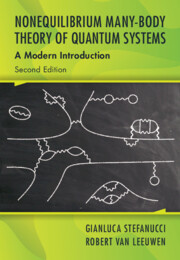‘This is a very important book for anyone working in theoretical many-body physics. Adopting a unified approach based on the second quantization and Green's function operators, the authors commence an exciting journey through equilibrium and nonequilibrium Green's functions techniques, including topics rarely considered in other textbooks, such as functionals, conservation conditions, and two-particle Green's functions. The obvious advantage of this text, compared to many others, is that everything is carefully derived, with most of the steps being given. In this second edition the authors have substantially revised the content, bringing it fully up to date and achieving a more logical narrative throughout.'
Lev Kantorovich - King's College London
‘The second edition of Nonequilibrium Many-Body Theory of Quantum Systems is an essential reference from two grand masters of the field. Their clear and rigorous presentation of nonequilibrium Green's functions methods – covering photoemission, optical, and transport phenomena – offers an ideal introduction for newcomers, while providing a solid foundation for further advances in first-principles many-body methods, algorithms, and software. Notable updates with respect to the first edition include dedicated chapters on electron-phonon interactions and the semiconductor Bloch equations, reflecting the latest advances in the field. Streamlined and expanded, this book should be on the shelf of every graduate student and researcher working at the frontier of condensed matter and materials physics.'
Feliciano Giustino - The University of Texas, Austin
‘Nonequilibrium Green's functions (NEGF) are the method of choice in theoretical open quantum systems, an area of research which covers quantum transport, nanoscale spectroscopy, molecular electronics, strongly correlated systems, nuclear physics, quantum thermodynamics, and more. This book by Gianluca Stefanucci and Robert van Leeuwen is a comprehensive textbook on NEGF, starting from the basics and introducing material in a logical step-by-step manner, bringing the reader to the latest developments in the field and giving them the knowledge to undertake independent research. This second edition of the book is greatly improved and will be very useful to any student or researcher as a comprehensive guide to NEGF.'
Michael Galperin - University of California, San Diego



